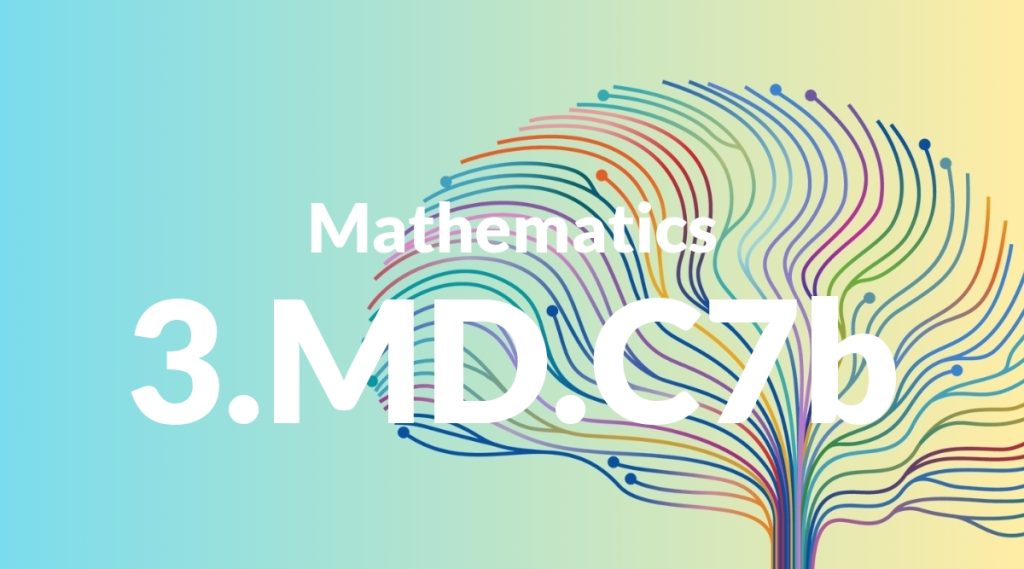Standard: 3.MD.C7b – Multiply side lengths to find areas of rectangles with whole-number side lengths in the context of solving real world and mathematical problems, and represent whole-number products as rectangular areas in mathematical reasoning.
Grade level: Grade 3
Subject: Mathematics
Domain: Measurement & Data
Teacher Overview
This standard focuses on teaching students how to multiply side lengths to find the area of rectangles with whole-number side lengths. It is crucial as it lays the foundation for understanding area, a key concept in geometry and real-world problem-solving. Ensure students have a solid grasp of multiplication and basic geometric concepts such as identifying and measuring the sides of rectangles.
After mastering this standard, students will be able to solve more complex area problems and use algebraic expressions to represent area, preparing them for advanced geometry.
Common Misconception 1
A common misconception is that students may confuse perimeter with area. Perimeter is the distance around a shape, while area is the amount of space inside the shape.
Intervention 1
To address this misconception, use visual aids and hands-on activities that highlight the difference between linear measurements (perimeter) and square units (area).
Common Misconception 2
Another misconception is that students might believe only squares can be used to measure area. This limits their understanding of how area applies to various shapes.
Intervention 2
Provide diverse examples of rectangles and other shapes, emphasizing that any shape with whole-number side lengths can be used to measure area.
Prerequisite Knowledge
Students should understand basic multiplication and the concept of area as the amount of space inside a shape. They should also be familiar with identifying and measuring the sides of rectangles.
Subsequent Knowledge
Students will develop skills in solving more complex area problems, including those involving irregular shapes and the use of algebraic expressions to represent area.
Instructional Activities
- Create a garden layout on graph paper, calculating the area for different plant sections.
- Design a floor plan for a room, determining the area for carpet or tiles.
- Build a rectangular sandbox and calculate the amount of sand needed.
- Draw a blueprint for a small park, including areas for playgrounds and benches.




